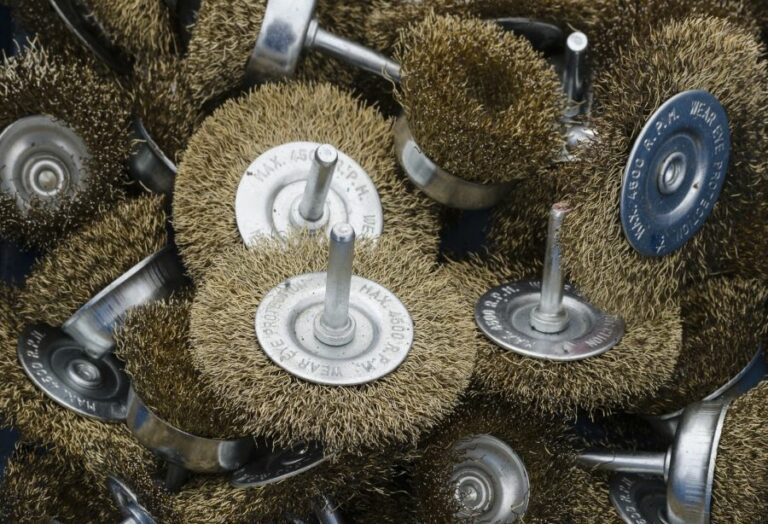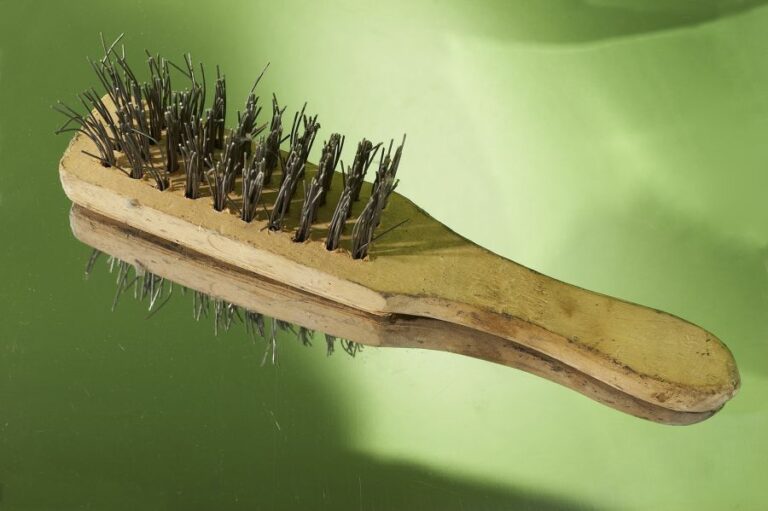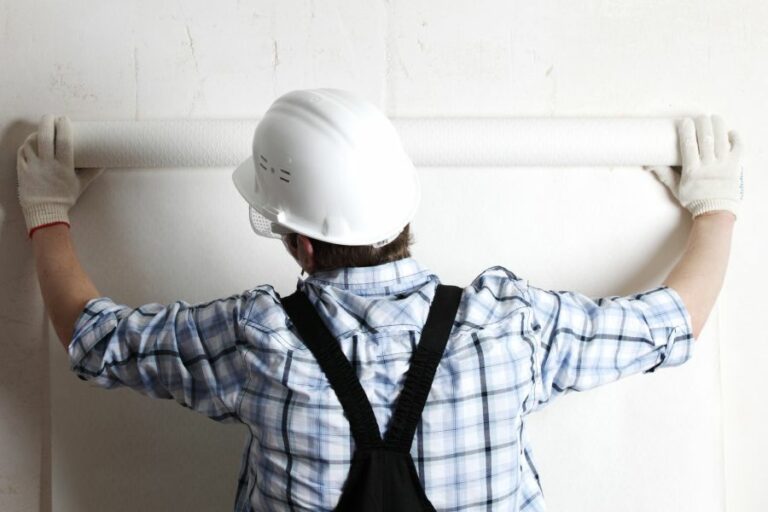Moisture Prevention During Surface Prep
Moisture prevention during surface prep is crucial for ensuring the longevity and quality of your project. Fortunately, with our expertise and proven strategies, we know how to tackle this issue head-on. By following our advice, you can be confident that your surface will remain free from damage caused by moisture, ultimately enhancing its durability and overall performance.
Moisture prevention during surface prep:
Moisture prevention during surface preparation is essential for optimal adhesion and durability of coatings, linings, and other finishes. Methods include dehumidification, surface temperature control, protective barriers, and continuous moisture monitoring. Employing moisture-friendly surface preparation techniques, such as abrasive blasting and mechanical and chemical methods, enhances moisture prevention effectiveness.

Are you tired of moisture messing up your surface preparation? Don’t let it dampen your spirits! Read on as we dive deep into the secrets of moisture prevention during surface prep to help you achieve a perfectly dry surface every time. Keep going and become a master of your craft.
Contents
- 1 Preventing Moisture During Surface Preparation
- 2 Tips for Reducing Moisture Content Effectively
- 3 Impact of Humidity on Surface Prep and Coating Application
Preventing Moisture During Surface Preparation
Maintaining a dry surface during surface preparation is crucial for achieving optimal adhesion, avoiding corrosion, and ensuring the long-lasting quality of coatings, linings, and other finishes.
Before delving into the various moisture prevention methods, it is essential to understand and identify the potential moisture-related problems that may arise during surface preparation. These issues include:
- Humidity: High relative humidity can cause moisture to condense on surfaces, leading to a potential loss of adhesion and other surface-related issues.
- Dew Point: When the surface temperature falls below the dew point, condensation will occur, possibly leading to incomplete or compromised surface preparation.
- Moisture Content: Excessive moisture in the substrate or the surrounding environment can adversely affect the adhesion and durability of applied coatings.
The US Environmental Protection Agency (EPA) recommends addressing moisture-related issues during surface preparation to ensure proper adhesion and long-lasting performance of the applied coating.
• Methods for Moisture Prevention during Surface Prep
– Dehumidification
Dehumidification is a crucial step in maintaining an appropriate level of humidity during surface preparation. It involves removing moisture from the air to maintain a consistent relative humidity, thereby preventing moisture condensation on surfaces.
Industrial-grade dehumidifiers are widely available on the market, and they can help control the humidity levels in the work environment.
– Surface Temperature Control
Controlling the surface temperature plays a vital role in moisture prevention during surface preparation. Ensuring that the surface temperature remains above the dew point can prevent the formation of condensation. There are various methods for controlling surface temperature, such as:
- Using infrared heaters.
- Applying heat through insulation or heat tracing.
- Utilizing tenting or environmentally controlled enclosures.
It is essential to monitor the surface temperature during the entirety of the surface preparation process.
– Protective Barriers and Tenting
Building tent-like structures around the work area provides protection against the elements and helps maintain a controlled environment for surface preparation. Depending on the surface material and requirements, different types of tents can be considered:
- Clear plastic tents provide visual access to the work area while maintaining control over the environment.
- Opaque tents offer a higher degree of protection against rain, wind, and UV rays.
- Tents with HVAC systems ensure temperature and humidity control.
Prefabricated tents are commercially available, or they can be custom-made, depending on the project requirements.
– Moisture Measurement and Monitoring
Regularly measuring and monitoring the moisture content in the substrate and the surrounding environment is essential to ensure optimal surface preparation. Several methods are available to accurately determine the moisture content:
- Electronic moisture meters gauge the electrical resistance of the substrate, which varies with moisture content.
- Gravimetric methods involve measuring the weight loss of a sample after drying in an oven; the moisture content is directly related to the weight difference.
- Calcium Chloride tests measure moisture vapor emissions from a concrete surface.
Combining these moisture prevention methods can significantly reduce the risk of moisture-related issues during surface preparation.
• Surface Preparation Techniques and Moisture Prevention
Choose surface preparation techniques that minimize the introduction of moisture, or that can be effectively carried out in high-humidity conditions. Some examples of moisture-friendly surface preparation techniques include:
- Abrasive blasting: Dry abrasive blasting with a moisture separator in the air supply can help prevent moisture contamination.
- Mechanical methods: Grinding, needle gunning, and power brushing can efficiently remove surface contaminants without introducing moisture.
- Chemical methods: Solvent-based strippers or other low-moisture cleaners can help prevent the introduction of moisture.
Selecting the appropriate surface preparation technique while incorporating moisture prevention strategies will yield better results for the applied coating and ensure long-lasting protection.
• Conclusion
Moisture prevention during surface preparation is vital in maintaining the integrity of various surfaces while ensuring the adhesion and durability of coatings, linings, and other finishes.
By using dehumidification, temperature control, protective barriers, and continuous moisture monitoring, moisture-related issues can be significantly reduced during surface preparation.
Selecting moisture-friendly surface preparation techniques will further enhance the effectiveness of moisture prevention measures.
Step | Description | Tips |
|---|---|---|
1 | Choose the right time | Try to plan surface prep on dry days with low humidity. |
2 | Inspect the surface | Make sure there are no visible signs of moisture, such as damp spots or mold growth, before starting the surface prep. |
3 | Clean the surface | Use a high-quality cleaner that will not leave any residue. Allow the surface to dry completely before starting the surface prep. |
4 | Seal the surface | Use a moisture-resistant primer or sealant if necessary, especially if the surface has a history of moisture issues or if it is located in a high-humidity area. |
5 | Use appropriate equipment | Choose equipment and materials that are specifically designed for the task and the particular surface being prepped. This may include moisture-resistant sandpaper, brushes, or other tools. |
6 | Maintain good ventilation | Keep windows or doors open during the surface prep process, if possible, to allow any excess moisture to escape. |
Tips for Reducing Moisture Content Effectively
Moisture content is a critical factor that affects the quality and shelf life of various products, such as food, agricultural crops, wood, and even houses. Reducing and maintaining moisture content at optimal levels is crucial for the longevity and preservation of these products.
• Understanding Moisture Content
Moisture content refers to the amount of water present in a given substance. It’s essential to quantify and monitor this metric because it can affect the quality, microbial activity, and shelf life of products.
A sound understanding of moisture content helps ensure optimal storage conditions and prevents various issues related to excess moisture.
• Dehumidification
Dehumidification is the removal of moisture from the air to reduce the relative humidity. This process is essential in controlling moisture levels in various applications, such as homes, offices, manufacturing facilities, and storage areas.
Dehumidifiers come in various sizes and capacities, suitable for different requirements.
– Recommendation
Invest in a good-quality dehumidifier for spaces with high moisture content. Running a dehumidifier in damp areas can help create a more comfortable environment and prevent mold growth.
• Ventilation
Proper ventilation is essential to reduce moisture content, as it allows for a continuous airflow that prevents stagnation of moisture-laden air. Ensuring that the area has sufficient air circulation can reduce moisture build-up effectively.
– Recommendation
Inspect and maintain the ventilation systems regularly to keep them in optimal working condition. In addition, consider installing exhaust fans in areas with high moisture production, such as kitchens, laundry rooms, and bathrooms.
• Moisture Adsorbents
Moisture adsorbents, also known as desiccants, are materials that can absorb and hold moisture from the surrounding environment. Desiccants often come in small packets or containers that can be placed in storage areas or packaging to help maintain optimal moisture levels.
Common types of desiccants include:
- Silica gel
- Calcium chloride
- Activated alumina
- Bentonite clay
– Recommendation
Use appropriate desiccants in storage areas or packaging to maintain the desired moisture levels, especially for moisture-sensitive items like electronics, food, and clothing.
• Temperature Control
Controlling the temperature in storage or living spaces can significantly impact moisture content levels, as warmer temperatures promote moisture evaporation. By maintaining a stable temperature in the area, moisture content can be effectively managed.
– Recommendation
Install a thermostat or climate control system to maintain a consistent temperature, as this will prevent extreme fluctuations in moisture content.
• Pre-drying Techniques
Pre-drying techniques can help reduce moisture content in materials before they enter storage or processing. Drying methods can vary depending on the type of material or product being handled. Common drying methods include:
- Air drying: Exposing the material to natural air circulation and sunlight.
- Oven drying: Baking materials at specific temperatures to remove moisture.
- Freeze-drying: Freezing the material and removing moisture by sublimation.
- Kiln drying: Controlled heating of materials, like wood, using specialized equipment.
– Recommendation
Choose the most suitable pre-drying method for your specific application, considering factors like material type, efficiency, and cost.
• Moisture Measurement
Regular and accurate moisture measurement is imperative for effective moisture content management. Various techniques and instruments can be used to measure the moisture content in materials, such as:
- Gravimetric method: Weigh the sample before and after drying to determine moisture content.
- Moisture meters: Devices that use electrical conductivity or radio frequency to estimate moisture content.
- Near-infrared spectroscopy: Analyzing light absorbance at specific wavelengths to measure moisture levels.
For a comprehensive guide on different moisture measurement methods, visit the National Renewable Energy Laboratory website.
– Recommendation
Invest in a reliable and accurate moisture measurement system to help monitor and maintain optimal moisture levels in your products or storage spaces.
• Conclusion
Reducing moisture content in products, materials, or living spaces is crucial for various reasons.
Adequate dehumidification, ventilation, moisture adsorbents, temperature control, pre-drying techniques, and accurate moisture measurement play essential roles in managing moisture content effectively.
By implementing these methods and following the recommendations provided in this article, you can successfully reduce and control moisture content for optimal results.
Methods | Description |
|---|---|
Ventilation | Ensure proper airflow and circulation in the area to allow moisture to evaporate. |
Dehumidifiers | Using dehumidifiers helps extract excess moisture from the air, maintaining desired humidity levels. |
Heating | Increasing the temperature in the room can also help decrease moisture content by encouraging evaporation. |
Moisture-absorbing materials | Use materials such as desiccant packs or moisture-absorbing crystals to help reduce moisture in the area. |
Remove water sources | Fix any leaks or eliminate water-related sources that may lead to excessive moisture. |
Insulation | Proper insulation can help reduce temperature changes and condensation, consequently reducing moisture. |
Impact of Humidity on Surface Prep and Coating Application
• Understanding Humidity and its Effects
Humidity refers to the amount of water vapor present in the air. It plays a crucial role in various industrial and commercial processes, especially when it comes to surface preparation and coating application.
Humidity affects the adhesion, drying, and curing of coatings, which in turn, impacts their performance and durability.
• Optimum Conditions for Surface Preparation and Coating
To achieve a superior coating finish, it is vital to work within the recommended humidity and temperature levels.
According to the SSPC (The Society for Protective Coatings) and NACE International (National Association of Corrosion Engineers), the following conditions are considered optimal for surface preparation and coating application:
- Relative humidity: 40-60%
- Surface temperature: 3-5 (5-10) above the dew point
- Ambient temperature: 10-35 (50-95)
Adhering to these guidelines will help prevent potential problems, such as poor adhesion, blistering, and under-curing, that may compromise the integrity of the coating system.
• The Influence of Humidity on Surface Preparation
– Contaminants and Corrosion
High humidity levels can cause condensation on metal surfaces, leading to the formation of rust and other contaminants. This moisture, combined with airborne particles, creates a corrosive environment that can compromise the integrity of the substrate.
To counter this issue, it is crucial to thoroughly clean and dry the surface before coating application. Abrasive blasting, for example, is an effective method for removing rust, mill scale, and other contaminants.
– Surface Drying
Properly drying the surface is essential for achieving strong adhesion between the substrate and the coating. High humidity may prolong the drying time or make it difficult to achieve the desired level of surface dryness.
In such cases, it is advisable to use dehumidifiers or heated air blowers to maintain appropriate conditions during the drying process.
• The Effects of Humidity on Coating Application
– Application and Curing
High humidity can significantly impact the application and curing of coatings. If the relative humidity is too high, the evaporation rate of solvents within the coating will be reduced.
This can lead to a slower drying time, resulting in a softer, less durable finish. In extreme cases, the coating may not fully cure at all, leading to a compromised system that is susceptible to premature failure.
To mitigate this issue, it is essential to monitor and control the humidity levels during the application process. Consider using air movers or climate control systems to maintain the recommended humidity range of 40-60%.
Additionally, ensure that the ambient and surface temperatures are within the suggested guidelines, as this can also impact the coating’s drying and curing stages.
– Blistering
Blistering is a common problem that arises when applying coatings in high-humidity environments. As the coating dries, moisture trapped beneath the surface can cause blisters or bubbles to form.
This issue can be particularly problematic for coatings with a high film build, as the increased thickness can exacerbate the blistering effect.
To prevent blistering, it is crucial to maintain the recommended humidity levels during application and drying. Moreover, consider applying multiple thin layers instead of a single thick layer, as this will allow each layer to cure more effectively.
• Recommendations for Successful Coating Application
- Monitor and control the temperature and humidity levels during surface preparation and coating application. Regularly check these parameters using a hygrometer or other similar instruments.
- Ensure proper surface cleaning and drying before coating application. Opt for abrasive blasting techniques, where applicable, to achieve the desired surface profile and cleanliness level.
- Use air movers, dehumidifiers, and/or climate control systems to maintain optimal environmental conditions during the coating process.
- Apply thinner film builds and multiple layers, particularly in high-humidity environments, to prevent blistering and other humidity-related issues.
- Consult the coating manufacturer’s guidelines to ensure you are working within their recommended parameters for temperature and humidity.
By understanding the effects of humidity on surface preparation and coating application, you can optimize your processes, minimize potential issues, and ensure a long-lasting and effective coating system.







